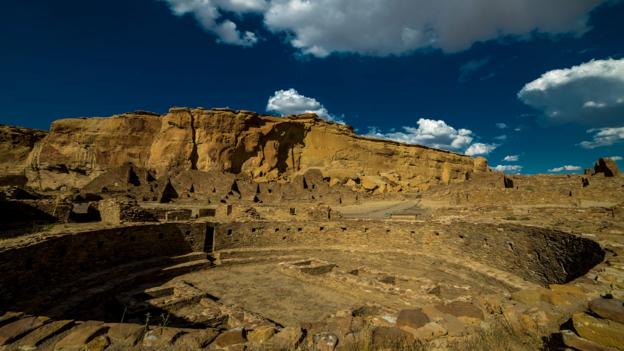When World War One broke out in 1914, the German crew of the SS Oberhausen were declared “enemy aliens” and were captured by a band of 11 Australian naval reservists. Captain Johann Meir and his sailors, who were taking on timber in Port Huon in Tasmania at the time, could have topped up with fuel and got out of port. Instead, they stayed, as it was safer than returning to Germany to fight. After piercing their ship’s liquor casks and sharing the grog with their captors, all of them arrived in the capital, Hobart, rolling drunk.
The reservists had some explaining to do, while the Germans were eventually sent to an internment camp at Bruny Island Quarantine Station. Conditions at the camp were reasonably good and Captain Meir was reported as saying, “What better place to spend the war?”. He wasn’t the first, nor would he be the last, to experience the freedom and isolation of Bruny Island.
The tiny island located off Tasmania’s south-east coast has played a significant role in Australia’s history as its isolation made it the perfect location for quarantine. The word is derived from the Italian words quaranta giorni, which means 40 days, the amount of time ships were usually required to sit at anchor before landing to prevent the spread of diseases such as typhoid. From 1884, passengers arriving in Tasmania had to be disease-free before they were allowed into the general community. Instead of being confined to a ship, they served out their isolation period and underwent health checks ashore at Bruny Island Quarantine Station, which remains on the island today.
You may also be interested in:
• The food that defines Australia
• The last true wilderness on Earth?
• Australia’s fairy-tale island
Prior to this, the land was occupied by the Nuenonne Aboriginal tribe, the nomadic traditional owners, who lived here for more than 6,000 years. Bruny Island was, and still is, a beautiful place covered in native forest and surrounded by waters teeming with fish. As the Nuenonne hunted and gathered, they would have been aware of Europeans passing by as early as 1777, as vessels travelling around the Cape of Good Hope in South Africa often used Adventure Bay on Bruny Island as a safe anchorage for replenishing supplies such as water and wood. However, European occupation of the Quarantine Station site didn’t occur until 1856, with the arrival of the Cox family.
What better place to spend the war?
Anthony Cox was transported from England to Hobart as a convict in 1833 for housebreaking. He was granted a conditional pardon in May 1849 and married convict Jane Daly soon after. As an ex-convict “of good conduct and disposition to industry”, he received a 19-acre parcel of land from the government on the site that would become the Bruny Island Quarantine Station. Cox and his family cut firewood for a living on land that was widely regarded as “very poor”, yet their home, Shellwood Cottage, was neatly fenced and surrounded by flowers. Compared to the hardships of convict life, the freedom and serenity of Bruny Island was akin to paradise.
Anna Woods experienced a glimpse of what life must have been like for the Cox family when she worked as volunteer caretaker at the site in early 2020.
“Being isolated in that environment and stacking up wood piles, it gives you time to absorb what life must have been like for the early settlers. You could see how tough some aspects would have been for those who were woodcutters, but what a beautiful place it must have seemed after the hardships of being a convict. Living there would not have been easy, but there are far worse places [to be].”
The land was eventually sold, and the Bruny Island Quarantine Station was built in the mid-1800s to prevent the spread of contagious diseases such as typhoid and smallpox that were prevalent at the time. The opening of the Suez Canal in 1869 saw an increase in international travel, and thousands of immigrants travelling to Australia on passenger ships to start a new life in the colonies were quarantined on Bruny Island. Some stayed in Tasmania, but many left for the Australian mainland once they were declared free of disease. On arrival at the Station, wealthy first-class passengers were housed in a separate building from steerage passengers, highlighting the importance placed on social class.
Three of the original buildings from this time remain and can be seen today. The cleansing room provided pedestrian access to the isolation block and was enclosed by a 3m fence, which also surrounded the Health Officer’s quarters and the hospital, observation wards, laundry and mortuary. The mortuary was divided into two sections, with one half used for disinfection and fumigation of passengers; and the other used as a morgue that fortunately saw little use over the years. The Station’s tiny cemetery has just two headstones, one for Charles Loaney and the other for John Johanson. Both men were crew on the SS Oonah passenger ship and died of influenza in 1919.
Living there would not have been easy, but there are far worse places [to be]
When Captain Johann Meir and his sailors arrived at the Quarantine Station in January 1915, it had been set up as a German internment camp. The crew were put to work with other Germans cutting timber and clearing land. There were around 70 internees in total and just 15 guards to patrol almost 2km of shoreline and a long fence. The task of stopping them from escaping would have been impossible – had the prisoners actually wanted to leave.
Perhaps it was because they proved to have such little interest in escaping that the prisoners were given so much freedom. They often worked outside the Quarantine Station boundaries and constructed their own buildings, including several camps well away from the main base. According to Kathy Duncombe, researcher and committee member of the Friends of Bruny Island Quarantine Station, one of their biggest challenges was boredom. “They spent their time chopping down trees, which were sold, but also because it gave them something to do. Some of them made ships in bottles to pass the time.” Two of these are on show at Bruny Island Quarantine Station’s interpretation centre, which opened in 2015.
After the Germans were moved to Holsworthy Internment Camp in Sydney in 1915, things were quiet at the Quarantine Station – but not for long. The end of World War One coincided with the beginning of the Spanish influenza pandemic. Instead of coming home to victory parades and being reunited with their families, Tasmanian soldiers returning from war spent seven days in quarantine at Bruny Island with hundreds of other men.
“Here we are home again at last or rather almost home,” wrote Private Edward Reynardson Wilson to his mother. “Almost the first person I met here was Chris (his brother). I never expected to see him home so soon. You can guess how pleased I was to see him.”
While the soldiers were initially disappointed with their delayed return home, many later realised it was the best thing that could have happened. They could get their land legs after many days at sea and talk to others who had experienced the horrors of war. This was good for the men psychologically as many didn’t want to burden their families. There was swimming, fishing, football, a movie tent and a boxing ring, which helped the soldiers release anger and frustration. Spirits were lifted by care packages from the Red Cross Society containing luxuries like cigarettes, books and fruit.
After the danger of the influenza pandemic had passed, the Station was mostly idle until the 1950s, when its focus shifted from humans to plants. As the only Australian Quarantine Station located on an island, it was turned into a national plant quarantine facility where introduced species such as raspberries, apples and hops could be isolated and tested for diseases that could have serious health and economic consequences if they were allowed into the country. It was during this period that many of the original buildings on the site were sold to farmers. “By the 1960s, the workers knew which buildings they were using and the ones they weren’t. The hospital is still being used as a house on Bruny Island and lots of the barracks from 1919 were sold and turned into haysheds,” said Duncombe.
History never stands still, there is always more to be told
In 1986, plant quarantine was moved to Kingston on Tasmania’s mainland and the site remained dormant until the Tasmanian Government declared it a State Reserve in 2003. Tasmania Parks and Wildlife Service (PWS) now manage the site with assistance from the Friends of Bruny Island Quarantine Station (FOBIQS) and volunteer caretakers who live in the original Health Officer’s cottage.
“We started with open days one Sunday a month to gauge public interest in the site,” Duncombe explained.
The response was good, and a self-guided heritage walk was developed so visitors could explore at their own pace. Aside from birdsong and the wind rustling the eucalyptus trees, the only sound you’ll likely hear during a stroll around the Quarantine Station is the crunch of your footsteps on the gravel paths. This sprawling site makes it easy to avoid any other visitors and lose yourself in the stories on the heritage walk’s panels. Some describe buildings like the cleansing room and Health Officer’s quarters, which remain today. Others tell the stories of structures that have been removed over the years.
Soldiers who spent time here after World War One couldn’t wait to get back to civilisation, but for some Tasmanian volunteers, being quarantined at this remote facility is a highly sought-after position. Volunteers Anna Woods and her husband Geoff Kerruish fell in love with the rugged beauty of the site and with sharing its history with visitors from Australia and around the world.
“People usually visit because they want to look around, but the more they find out, the more fascinated they become. Many don’t realise the different eras that are represented here,” Woods said.
More about the Quarantine Station’s history continues to be discovered, like the German internee’s diary that was donated to the FOBIQS. Duncombe explains that a 90-year-old man who speaks the same German dialect is translating the diary.
“There are 578 pages filled with beautiful handwriting and photographs of things we had never seen before. History never stands still, there is always more to be told,” she said.
Join more than three million BBC Travel fans by liking us on Facebook, or follow us on Twitter and Instagram.
If you liked this story, sign up for the weekly bbc.com features newsletter called “The Essential List”. A handpicked selection of stories from BBC Future, Culture, Worklife and Travel, delivered to your inbox every Friday.



























